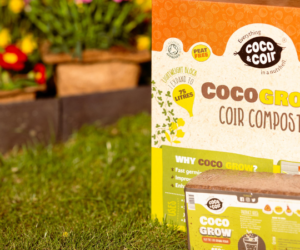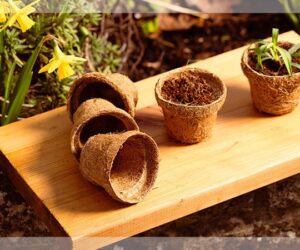Choosing the Right Compost for Your Needs
Choosing the right compost is a lot like picking the perfect seasoning for a gourmet meal. Just as different dishes require specific spices to bring out the intended flavour, different plants and soils need specific composts to thrive. Just as a pinch or too little of a spice can change the taste of a dish, selecting the wrong compost can affect the health of your soil and your plants. Much like a skilled chef, it is imperative that you choose the right compost to suit your needs.
In this article, we will take a look at how you can choose the right compost that can help you grow a flourishing garden.
First, let’s get to know compost a little better.
The Types of Compost
There are two main types of compost, peat-based and peat-free.
- Peat-based compost is made with peat, which is an organic matter made from the decomposition of partially decayed plants. Although it is a good source of nutrients for your plants, it is a non-renewable resource that is harmful to the environment.
- Peat-free compost is made without peat. It is usually made with a mix of other organic materials such as composted bark or wood fiber or coconut coir.
In addition to peat-based and peat-free compost, there are also a variety of specialized composts available such as:
- Seeding and cutting compost specially formulated for sowing seeds and root cuttings. It is typically lighter, and airier and contains higher nutrient levels necessary for young plants to grow.
- Vegetable composts made specially for growing different types of vegetables. It is high in nitrogen and phosphorous which are essential for plant growth.
- Compost for ericaceous plants formulated for growing ericaceous plants such as rhododendrons, azaleas, and blueberries that prefer acidic soil. Hence, this compost is low in pH.
How To Choose Your Compos
Here are the most important factors to consider while choosing a compost:
The Type of Plants You’re Growing
Different plants have different requirements for nutrients. For example, blueberries require composts that have a low pH level. Vegetables, on the other hand, require composts that are high in nutrients. Therefore, it is important to choose composts suited to the needs of the plants you are planning to grow.
The Condition of Your Soil
Your choice of compost will also be influenced by the condition of your soil. If your soil is of low quality, you may have to use compost that has high amounts of organic matter. This will help improve the soil’s overall fertility and drainage. Likewise, you can use compost that is lower in organic matter if the soil is already in good condition.
Environmental Impact
If you are an eco-warrior who is concerned about the environment, you may want to choose a compost that is made from sustainable materials and manufactured sustainably. Also, weigh in other factors such as sustainable product packaging and the brand’s commitment towards sustainability. Doing so can help you reduce the environmental impact and extend support for sustainable businesses.
Texture and Drainage
The ideal compost should have a balanced, crumbly texture and promote air flow and root development. This texture allows the plant roots to penetrate the compost easily, access nutrients and breathe freely. An overly dense and compacted compost will have the opposite effect. The compost should also promote drainage, thus preventing waterlogging. A compost with good drainage, for example, Harmony Gardens Multipurpose Compost ensures the plants receive consistent moisture without becoming oversaturated.
Local Climate
Firstly, you should think about the temperature your region is used to. In colder climates, where frost and subzero temperatures are unavoidable, it would be ideal to choose a compost with higher organic matter that provides insulation to protect plant roots. If you live in a region that experiences a hot climate, choose a compost that can help retain moisture without overheating the roots.
Common Compost Challenges
Here are some of the most common challenges gardeners face with composts and their respective solutions:
- Wet compost: Add dry materials such as straw, shredded leaves or wood chips. Periodically turning the compost can also help it dry.
- Dry compost: Water….duh! You can also add a layer of fresh materials on top of the compost pile.
- If the compost is not breaking down: Ensure that the compost pile is large enough – at least 3 feet by 3 feet by 3 feet. You can also add nitrogen-rich materials such as grass clippings.
- If the compost smells bad: Smelly compost is an indication of too much moisture content. The solution is to make it less wet – refer to the first point in this section. You may also have to remove any slimy or mouldy material.
- If the compost is attracting pests: This is an indicator that the compost is too wet or that it contains too much food scraps. Remove the food scraps, add dry materials and turn the compost often to keep slugs and critters away.
More Gardening Wisdom
We have lots more insights to share with you. Check out some of them:
- The Science of Soil and How Multipurpose Compost Can Enhance Soil Fertility
- The Best Lightweight Compost for Roof Gardens
- The Best Compost for House Plants – A Comprehensive Guide
- … and more.
Want us to email you our latest blogs? Enter your email ID in the form on the bottom right of this page.
Connect with us on The Gram!
Want to show off what you’ve grown in your garden? Follow us on Instagram @Cocoandcoir, upload your pictures and tag us. If we decide to share them with our audience, we will give you a shout-out!













